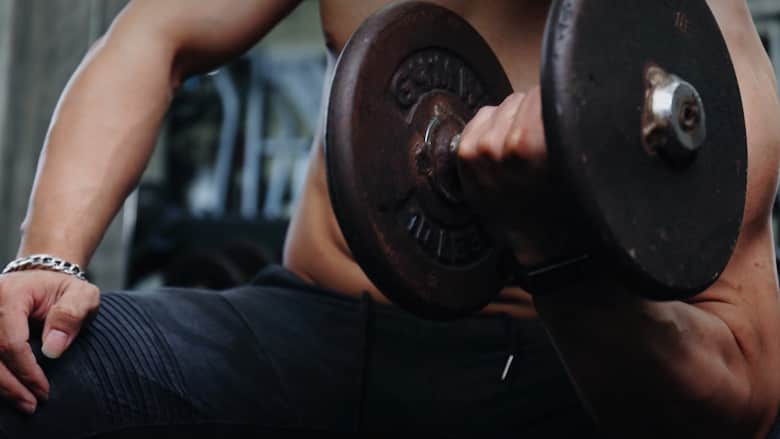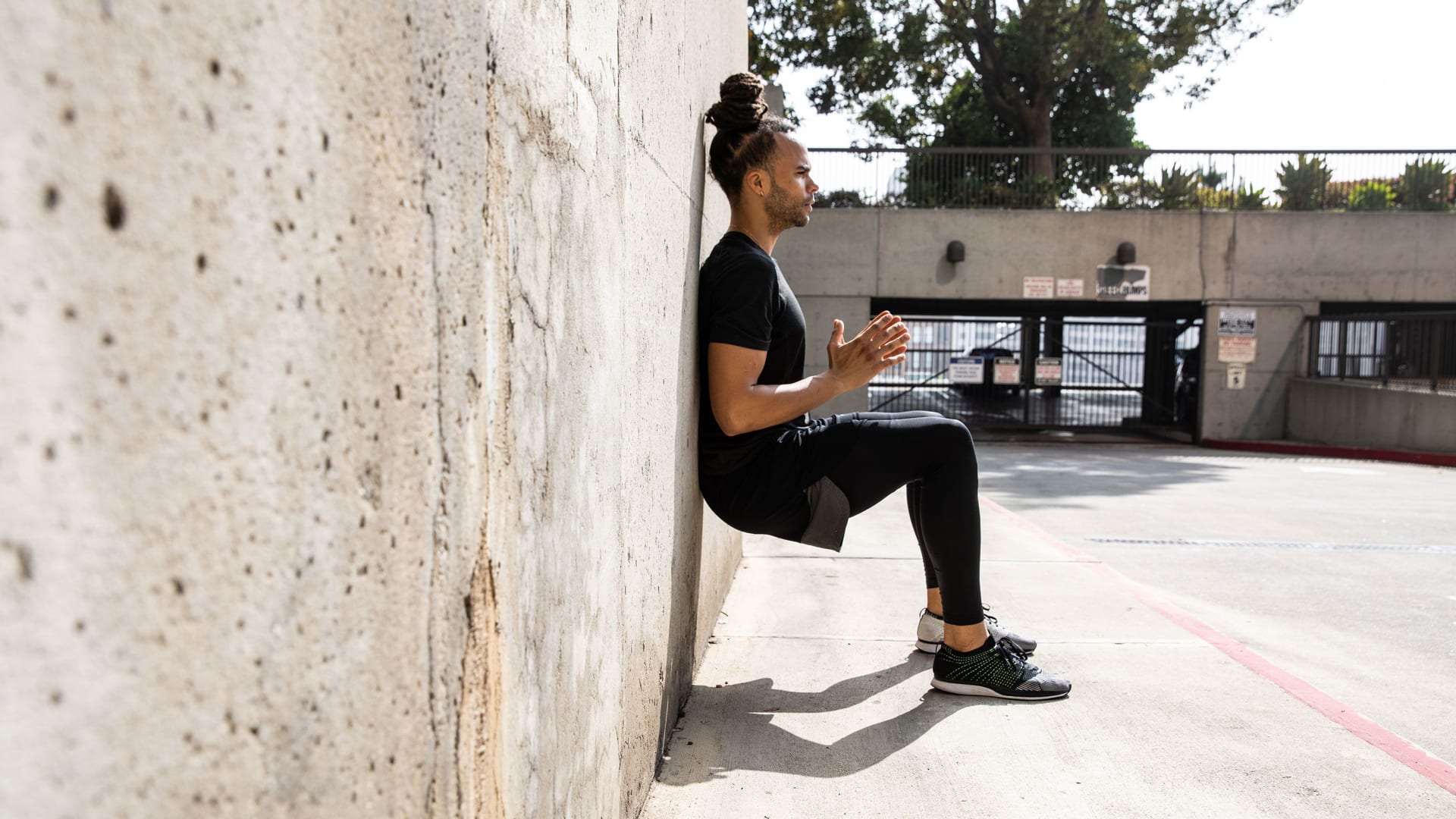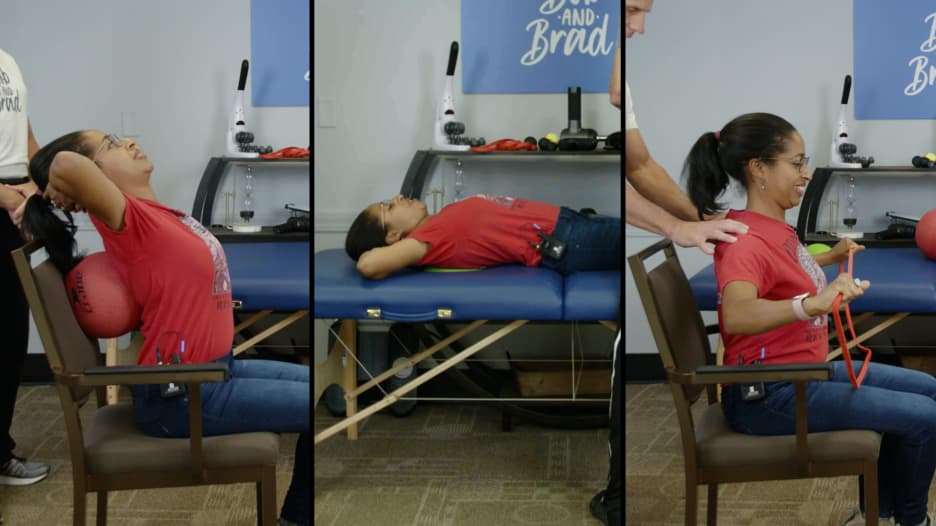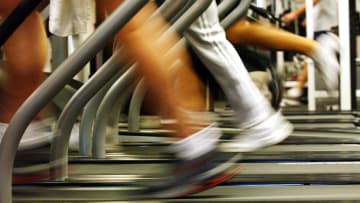دبي، الإمارات العربية المتحدة (CNN) -- عندما يتعلّق الأمر بخَفْض مستوى ضغط الدم، عادةً ما تُظهر الدراسات أنّ التمارين الهوائية أو تمارين القلب هي الأفضل.
الآن، تشير الأبحاث الجديدة إلى أنّ نوعًا آخر من النشاط البدني يستحق ممارسته كأداة فعّالة للوقاية من ارتفاع ضغط الدم وعلاجه.
وتعتبر التمارين الرياضية التي قوامها تشغيل العضلات من دون حركة، مثل تمرين القرفصاء الحائطي والتمرين اللوحي (البلانك)، الأفضل لخفض ضغط الدم، وفقًا لدراسة كبيرة نُشِرت، الثلاثاء، في المجلة البريطانية للطب الرياضي.
وبحسب مجموعة مايو كلينيك الطبية يُعرف هذا النوع باسم تمارين القياس الثابت المتمثلة بشد (تقليص) عضلة معينة أو مجموعة من العضلات.
وخلال ممارسة تمارين القياس الثابت، لا يتغيّر طول العضلة بطريقة ملحوظة. ولا يتحرّك المفصل المصاب أيضًا. وتساعد تمارين القياس الثابت في الحفاظ على القوة. كما يمكنها بناء القوة، ولكن ليس بشكل فعال. ويمكن ممارستها في أي مكان.
يمكن أن تُنفذ تمارين القياس الثابت بواسطة الأوزان أو من دونها، بالاعتماد فقط على وزن الجسم ذاته.
وقال الدكتور جيمي أودريسكول، أحد مؤلفي الدراسة، في بيان: "في المجمل، تعتبر تمارين القياس الثابت الطريقة الأكثر فعالية لتقليل ضغط الدم الانقباضي والانبساطي".
وأضاف: "تقدم هذه النتائج إطارًا شاملاً قائمًا على البيانات لدعم وضع توصيات جديدة للتمارين الرياضية من أجل الوقاية من ارتفاع ضغط الدم".
أفضل تمرين لعلاج ضغط الدم
وذكر الباحثون أن التوجيهات الحالية حول ممارسة التمارين للتحكم بضغط الدم، التي تركز على التمارين الهوائية أو القلبية مثل الجري أو ركوب الدراجات، تشير إلى أنها فعالة لكنّها مبنية أيضًا على أبحاث قديمة تستبعد بروتوكولات التمرين التي تم اعتمادها أخيرًا مثل التدريب بفترات عالية الشدة وتمارين القياس الثابت.
شعر الباحثون أنّ الإرشادات قدمة وتحتاج إلى مراجعة، لذلك نظروا في تجارب عشوائية محكومة أبلغت عن آثار التدخلات الرياضية، التي استمرت أسبوعين أو أكثر، على ضغط الدم الانقباضي و/أو الانبساطي بين عامي 1990 وفبراير/ شباط 2023.
ويقيس ضغط الدم الانقباضي القوة التي يوجّهها القلب إلى جدران الشرايين في كل مرة ينبض فيها، بينما يقيس ضغط الدم الانبساطي القوة التي يوجّهها القلب إلى جدران الشرايين بين النبضات، وفقًا للمراكز الأمريكية لمكافحة الأمراض والوقاية منها
حدّد المؤلفون ضغط الدم الطبيعي أثناء الراحة بأنه قراءة تقل عن 130/85 ميلليمترًا زئبقيًا، وقد وصفوا ارتفاع ضغط الدم الأولي بالتحول من 130/85 ملليمترًا زئبقيًا إلى 139/89 ملليمترًا زئبقيًا، وارتفاع ضغط الدم الشديد بأنه 140/90 ملليمترًا زئبقيًا أو أكثر.
والرقم الأعلى يكون ضغط الدم الانقباضي، والأدنى ضغط الدم الانبساطي.
من خلال مراجعة 270 تجربة شملت 15،827 مشاركًا، وجد مؤلفو الدراسة أنه بين التمارين الهوائية عالية الشدة، وتلك الخاصة بالمقاومة الديناميكية، ومجموعة رياضات أخرى، كانت تمارين القياس الثابت الأكثر تأثيرًا في خفض ضغط الدم.
وكان أداء تمرين القرفصاء (تمرين القياس الثابت) أكثر فاعلية لتقليل الضغط الانقباضي، وكان الجري (تمرين هوائي) أكثر فائدة لتقليل الضغط الانبساطي، ولكن تمرين القياس الثابت بشكل عام كان الأفضل لخفض عنصرَي الضغط، الانقباضي والانبساطي.
وقالت جوان وايتمور، ممرضة القلب في مستشفى مؤسسة القلب البريطانية لـCNN: "من المشجع أن نرى أشكالًا أخرى من التمارين التي تم استكشافها في هذا البحث لأننا نعلم أن~ أولئك الذين يمارسون التمارين التي يستمتعون بها يميلون إلى الاستمرار لفترة أطول، وهو أمر أساسي للحفاظ على انخفاض ضغط الدم".
وأضافت: "ومع ذلك، من المهم ملاحظة أن هناك تغييرات أخرى في نمط الحياة بالإضافة إلى التمارين التي يمكن أن تفيد ضغط الدم".
وتابعت: "وتشمل هذه التغييرات الحفاظ على وزن صحي، واتباع نظام غذائي متوازن، وتقليل الملح، وعدم استهلاك كميات كبيرة من الكحول، والتأكد من الاستمرار بتلقي أي علاج موصوف".
وقال مؤلفو الدراسة إنّ هناك حاجة إلى مزيد من البحث لتحديد السبب الذي يجعل تمارين القياس الثابت أفضل لخفض ضغط الدم مقارنة مع أنواع التمارين الأخرى.










